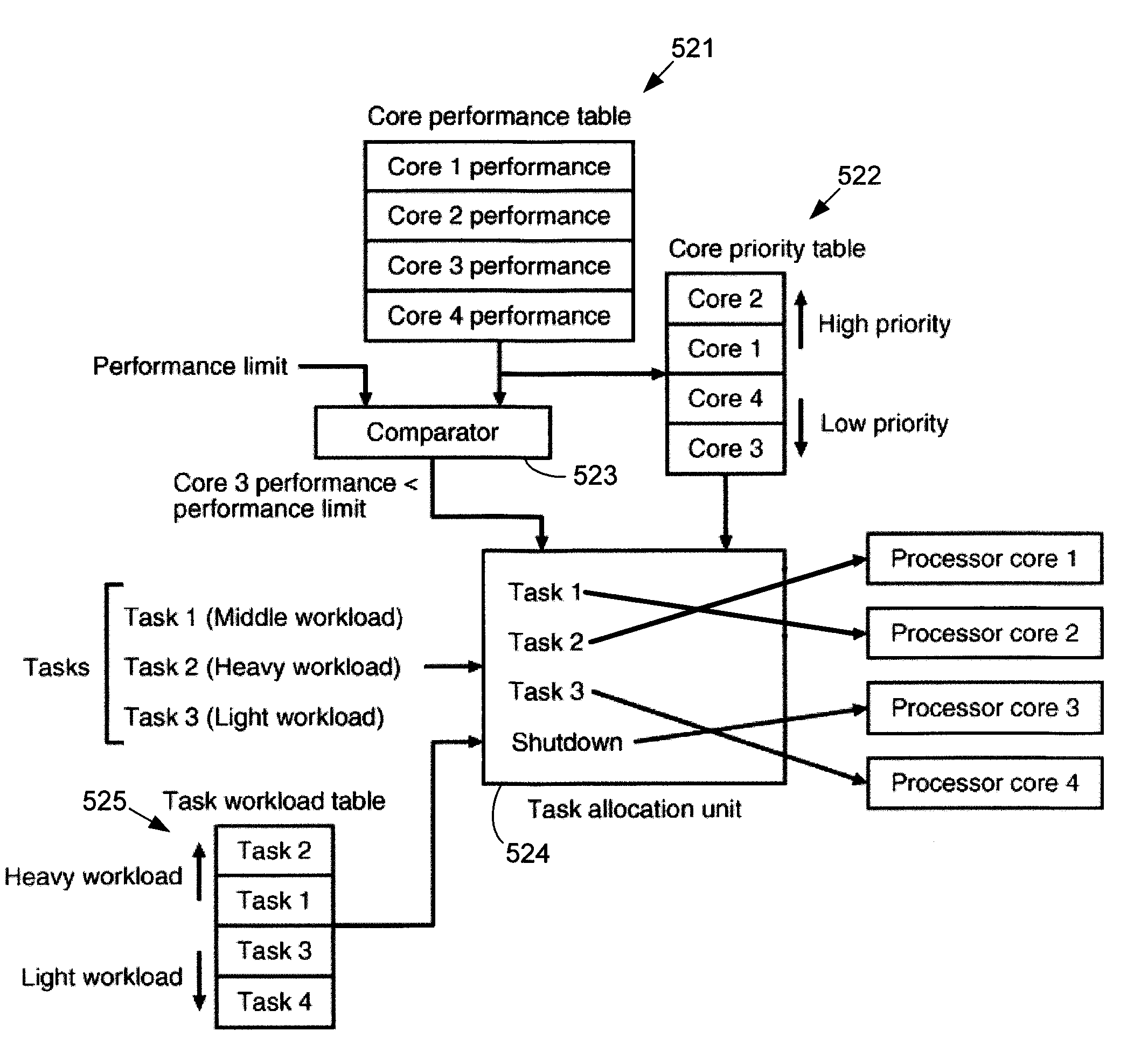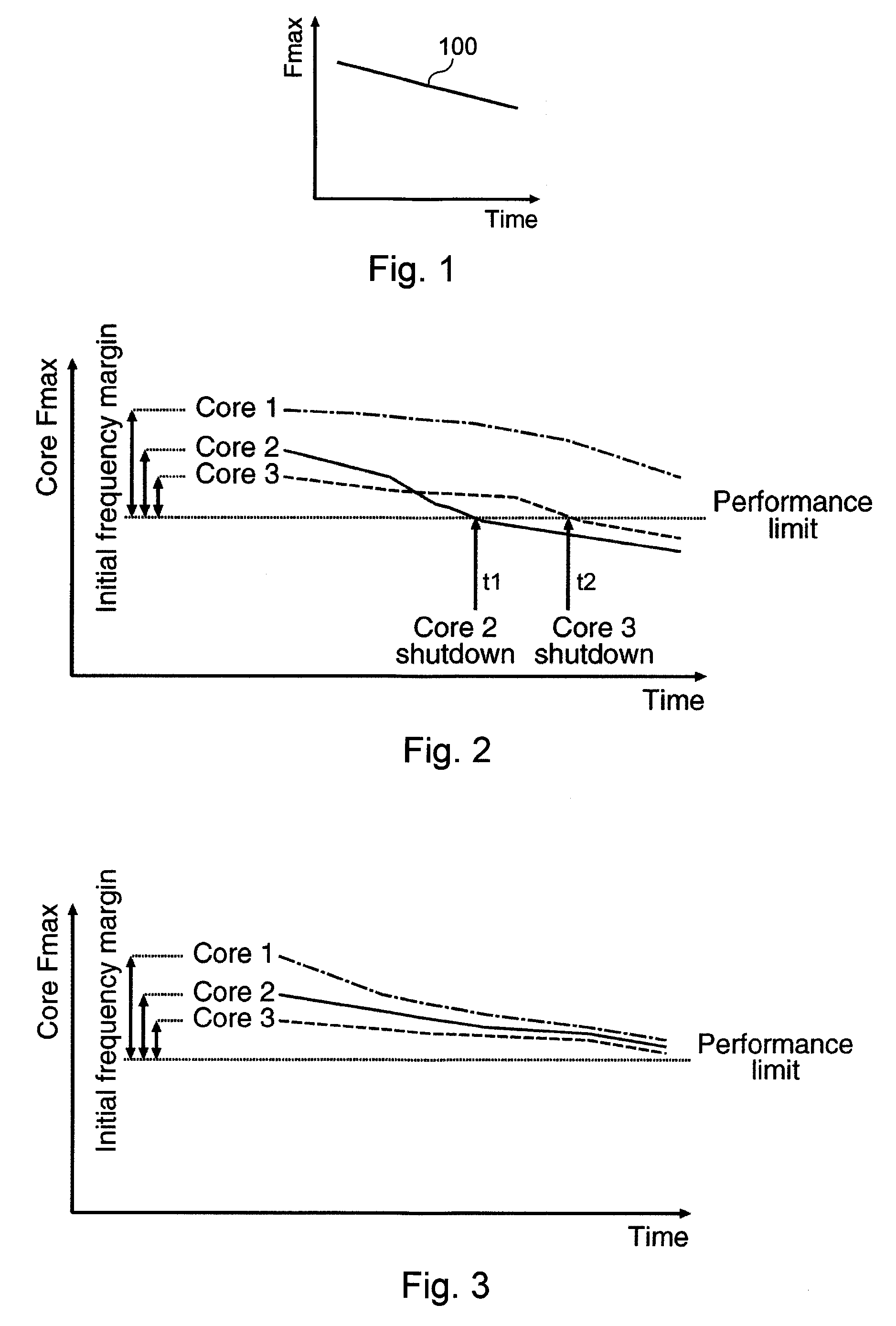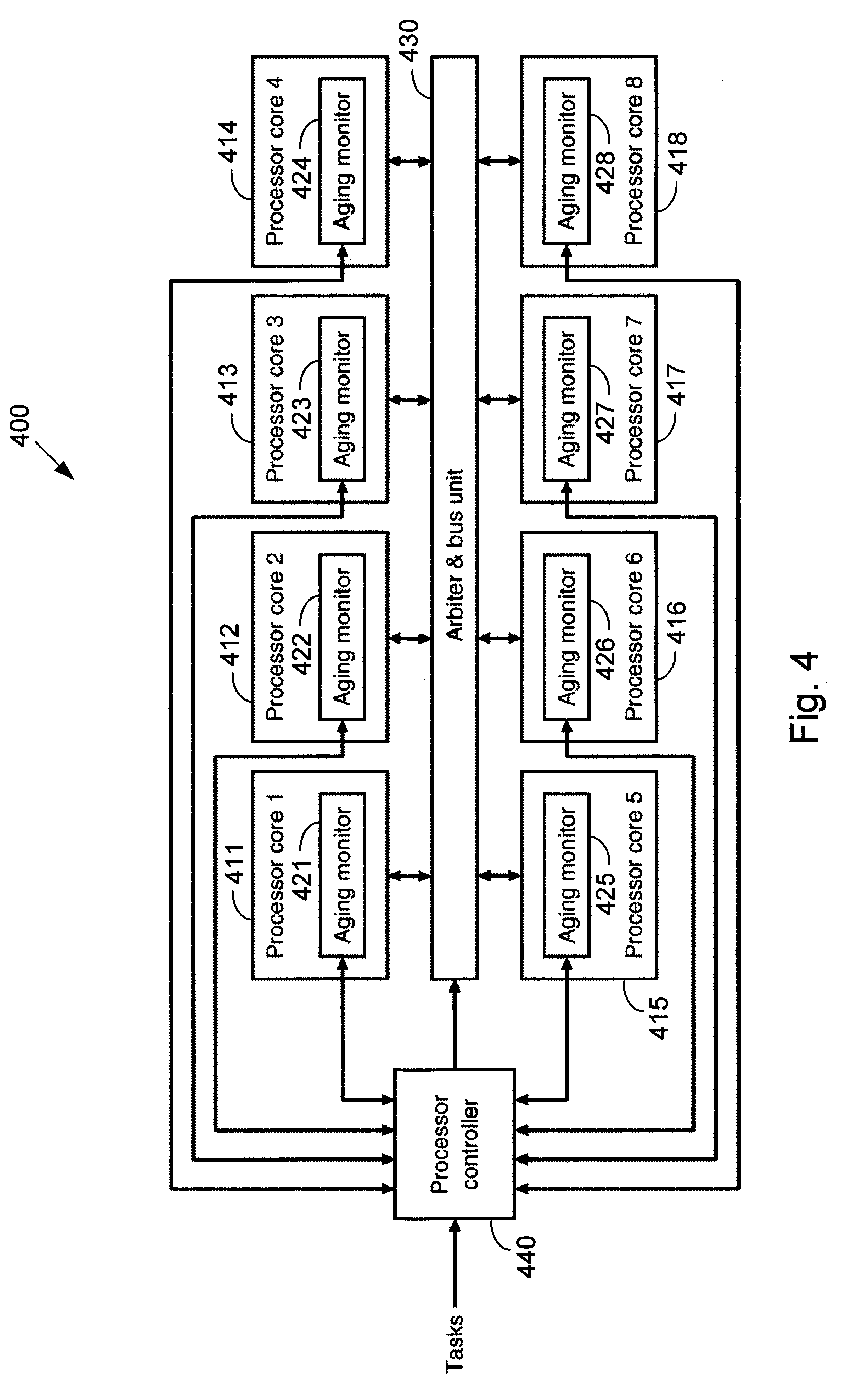Systems and Methods for Improving the Reliability of a Multi-Core Processor
a multi-core processor and reliability technology, applied in the field of multi-core processors, can solve the problems of reduced performance of circuit components, reduced performance of system components, and reduced performance of systems in which they are used, and achieve the effect of reducing the aging of lower-performing processor cores
- Summary
- Abstract
- Description
- Claims
- Application Information
AI Technical Summary
Benefits of technology
Problems solved by technology
Method used
Image
Examples
Embodiment Construction
[0030]One or more embodiments of the invention are described below. It should be noted that these and any other embodiments described below are exemplary and are intended to be illustrative of the invention rather than limiting.
[0031]As described herein, various embodiments of the invention comprise systems and methods for improving the reliability and extending the life of a multiprocessor system by reducing the aging of the lowest performing processor cores in the system.
[0032]In one embodiment, a multiprocessor system includes a set of processor cores that are coupled to an arbiter and bus unit, as well as a processor controller. Data and tasks are communicated to and from the processor cores through the arbiter and bus unit. The processor controller determines which tasks are allocated to each of the processor cores.
[0033]In this embodiment, each of the processor cores includes an aging monitor. The aging monitor is configured to enable measurement of the corresponding processor...
PUM
 Login to View More
Login to View More Abstract
Description
Claims
Application Information
 Login to View More
Login to View More - R&D
- Intellectual Property
- Life Sciences
- Materials
- Tech Scout
- Unparalleled Data Quality
- Higher Quality Content
- 60% Fewer Hallucinations
Browse by: Latest US Patents, China's latest patents, Technical Efficacy Thesaurus, Application Domain, Technology Topic, Popular Technical Reports.
© 2025 PatSnap. All rights reserved.Legal|Privacy policy|Modern Slavery Act Transparency Statement|Sitemap|About US| Contact US: help@patsnap.com



